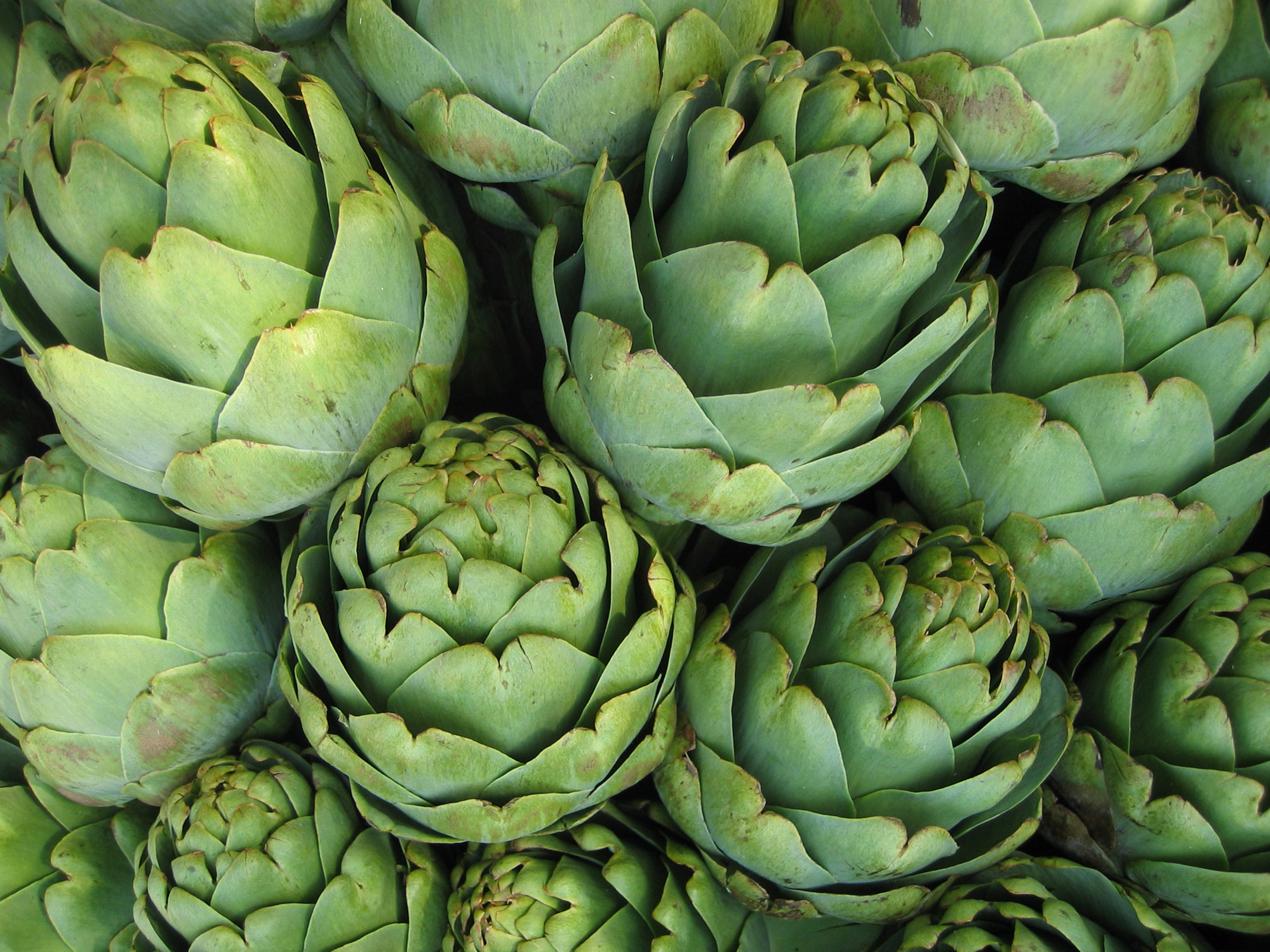Menu


The artichoke is a perennial in the thistle tribe of the sunflower (Compositae) family and in full growth the plant spreads to cover an area about six feet in diameter and reaches a height of three to four feet. The long, arching lobed leaves, silver-green in color make the artichoke look much like a giant fern. The buds, if allowed to flower, are up to seven inches in diameter and are a beautiful purple-violet.
Since artichokes are perennials, the more care in preparing the soil and planting, the better their quality and the greater the harvest. A well cared for plant will produce as many as forty or fifty buds. They grow best in sun, in a deep, rich, loose, well-drained soil. They are a cool weather plant and usually produce their best crop before the arrival of summer’s heat. Cool coastal areas are usually best for growing artichokes so the floral development will be slow and the buds will be of high quality.
Spring is the best time to plant artichokes in Western gardens. They are a fairly large plant, requiring more room then beans or tomatoes, but handsome enough to incorporate in your landscaping plans. These plants can be grown in rows as garden dividers or informal hedges, or grouped together and used to form a wide border.
Plant the offshoots or divisions about six inches deep. The tops should be above ground level. Space each plant three to four feet apart in rows and leave four to five feet between rows – water deeply. Each plant will send up seasonal shoots, the number varies from a single shoot in young plants to as many as 12 or more in plants that are 4 or more years old. Each shoot forms a cluster of large leaves from which a center stem grows. Buds are produced terminally on the elongated stem and on lateral branches. The terminal bud is usually the largest and the lower buds are generally smaller in size. The buds are ready for harvest when the top bud is about 2 to 4 inches in diameter and still fairly compact. Buds should be cut with about one-and-a-half inches of stem. The yield from the three or four plants should be quite enough for a small family’s enjoyment. And once established an artichoke plant will provide you with healthy crops from four to seven years.
After all the buds have been harvested, cut spent stalks to the ground and mulch with high quality compost or feed the plant with a well-balanced fertilizer. New shoots, which grow from the base of the old stump, will develop their own stalks. Monthly applications of nitrogen fertilizer are beneficial for healthy growth.
In cold winter areas, after the fall harvest, cover the crown of the plant with the leaves. Over this, heap about one foot of some loose mulch, such as straw. Remove in March or April, after the frosts have passed.